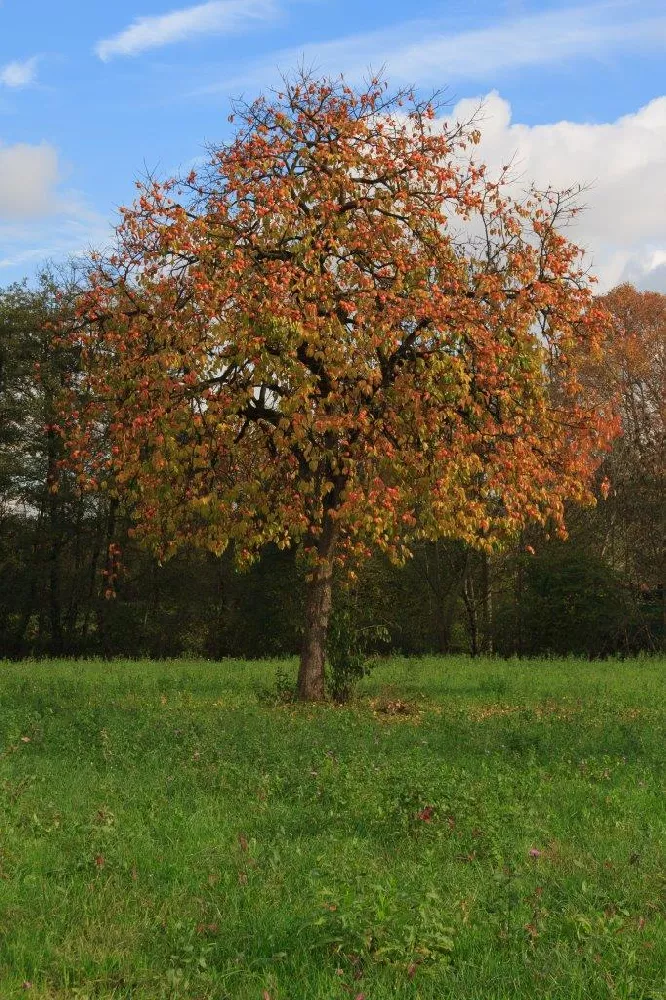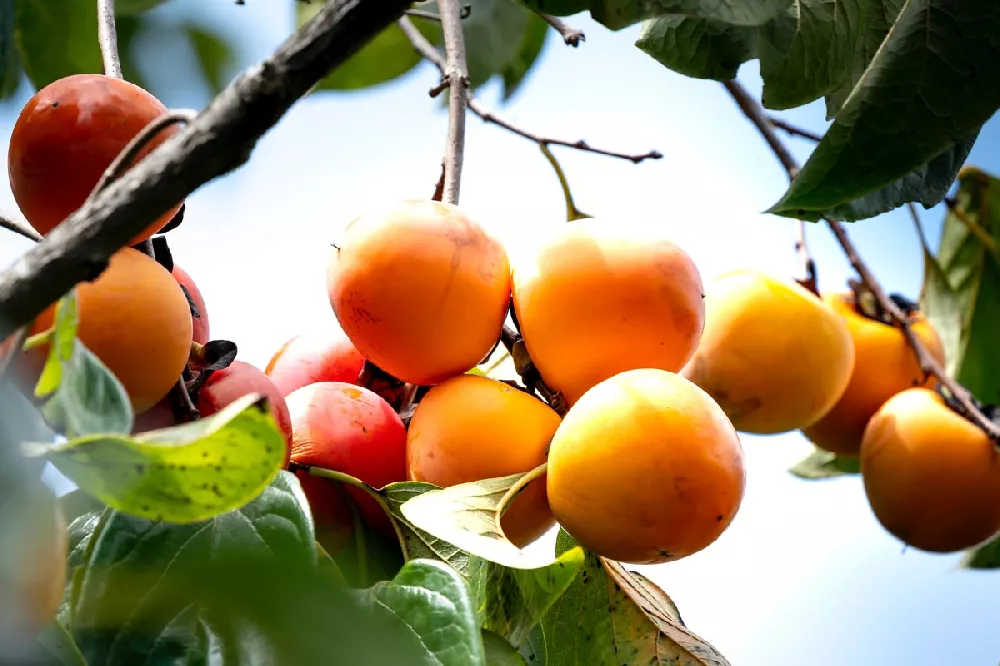- Home >
- Persimmon Trees >
- American Persimmon Trees
American Persimmon Trees for Sale
- Ships in 1-2 days
- 1-Year Warranty Eligible
- Pots or accessories are not included unless specified in the product options.
Shipping Details:
Once your order is shipped, you’ll receive an email with a tracking number and estimated delivery date. Most orders ship immediately, but some items are seasonal and may only ship in spring or fall. These products are noted on the website.
Diospyros virginiana is a species of persimmon tree commonly referred to as the American persimmon, common persimmon, or the sugar plum. The tree is native to the U.S. and grows wild from the Midwest to the Atlantic coast. Native Americans were the first to cultivate the tree as it provides a rich winter food source.
- Can grow to heights of over 50 feet.
- Produces sweet fruits with nutty and spicy flavors.
- Leaves are oval shaped with a deep-green hue.
Plant Care
Sunlight

Grows best in full sun but survives in most partial shade conditions as well.
Watering
During periods of hot weather, water once or twice per week. Otherwise, water needs are relatively low.
Fertilizing

Fertilization needs are low. Use a balanced fertilizer when mature species show slowed growth.
Planting and Care
Planting instructions
American persimmon trees can be grown from seeds, grafts, cuttings, or suckers. The tree will grow best when planted in sandy, well drained soil. The species is easy going and can handle other conditions as long as the soil is not too moist. Plant American persimmon trees in full sun for optimal growth, they will also tolerate partial, or half day, sun if necessary. The species will grow successfully in USDA hardiness zones 4 – 9, tolerating winter temperatures as low as negative 20 degrees fahrenheit.
Watering and nutrients
New seedlings should be kept well watered until they are established. Once mature, American persimmon trees will only require watering during periods of drought. As long as your climate provides a few inches of rain per week, they will be mostly self sufficient. The trees should not require fertilization, unless they are showing signs of slowed growth. When you notice the trees are not thriving, side dress (place fertilizer in a shallow trench near the plant) with an all purpose fertilizer, or a light layer of compost. During the first 2 to 3 years, use a fertilizer with an NPK of 5-5-2, and switch to 10-10-10 thereafter.
Pollination
American persimmon flowers attract bees, providing them with valuable nectar. In turn, the bees spread pollen from the trees, fertilizing nearby individuals. The trees are dioecious, meaning they produce either male or female flowers, and require other trees in close proximity to successfully fruit. These days, self fertile varieties of the American persimmon tree are available for home gardens. However, having additional trees in the area will dramatically increase fruit production, as the trees will not have to rely on their own pollen production.
Pests, diseases, and animals
American persimmon trees do not often experience damage from pests or diseases, although there are a few to watch out for. Crown gall is the most common disease in the species, showing up as round growths (called “galls”) on the branches of the tree. The best offense against crown gall is a good defense. Fungal spores for crown gall enter through tree wounds. Avoid damaging the tree with weed whackers or other yard equipment that damage the bark. Fungal diseases occasionally show up when the tree is left in excessively moist conditions. The sweet fruits will attract a variety of animals in the winter, including raccoons, deer, and birds.
Harvesting
American persimmon trees usually begin to bear fruit after six years, but some individuals may take over 10 years to begin production. Harvest season is between October and December, depending on the climate. The fruits will be ready to harvest when they begin to fall off of the trees. A common harvesting method is to give the tree a good shake, if the fruits are ripe they will rain down around you. Gather the persimmons in a bucket, as the mushy fruits may become squashed in a bag.
FAQs
How fast do American persimmon trees grow?
American persimmon trees grow at a rate of approximately two feet per year. To achieve this rate of growth, the tree should be planted in favorable conditions. Trees grown in colder hardiness zones will likely experience slower growth rates. In addition, young persimmons may require staking (tying the tree down to help keep it upright and stable) in their first few years to prevent slowed growth. To encourage quicker growth, a light pruning can be performed while the tree is dormant, removing broken branches or overcrowded areas of the tree.
How can you tell if a persimmon is ripe?
Persimmons are delectably juicy fruits, but only when ripe. The immature fruits are firm and will not fall off of the tree easily. Biting into an unripe persimmon will release large amounts of tannins, an astringent compound that makes the fruit bitter and inedible. As the persimmons ripen, they become soft and sweet as the tannins fade away. Ripe fruits will readily fall from the tree when given a shake.
How can you tell if a persimmon tree is male or female?
American persimmon trees are either male or female, with many varieties only producing fruit when in close proximity to other trees of the opposite sex. The most effective way to tell the difference is to look at the tree’s flowers. Male flowers are smaller in size and show up in clusters, whereas the female flowers are spread out individually. Male flowers will have larger, pollen producing stamens, while female flowers will prominently feature a pistil.










